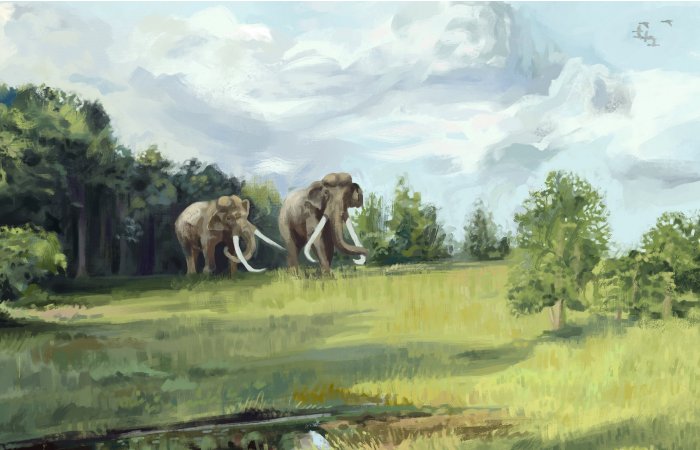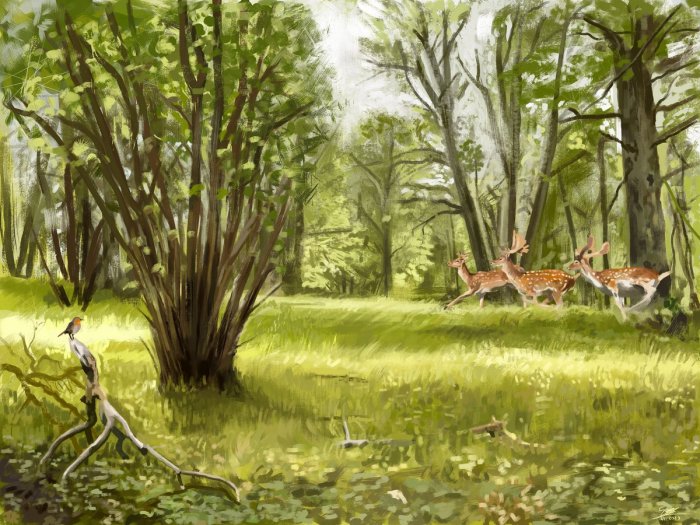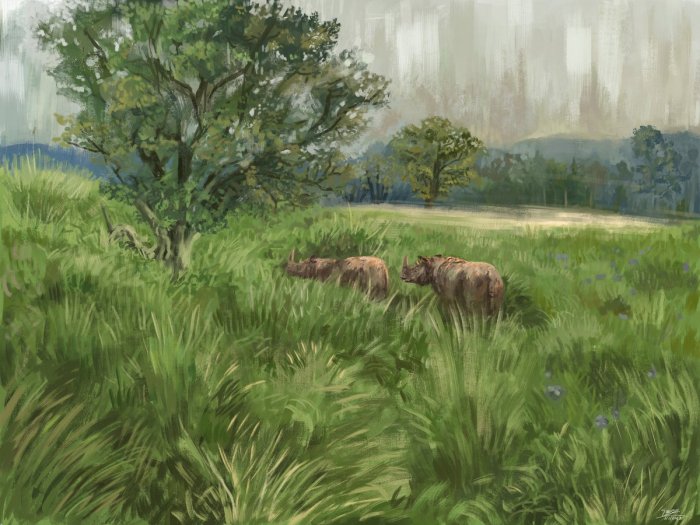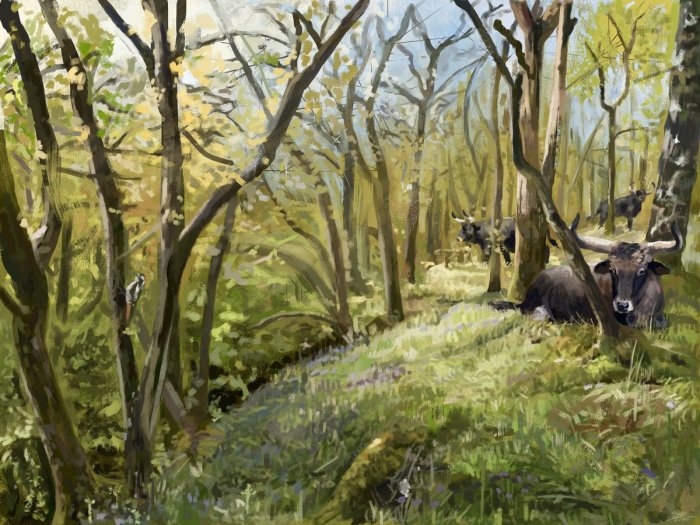Eddie Gonzales Jr. – AncientPages.com – For decades, we believed that outside ice ages Europe was mostly covered by dense forest before the arrival of modern humans. Now, a new study shows that there was far more open and semi-open vegetation than conventionally expected.

Big animals, like the elephants on the illustration, probably helped keep part of the European landscape open or semi-open during last interglacial period. That created variation in the vegetation and fauna. Illustration: Brennan Stokkerman
Textbooks on biology and forestry make it clear that large parts of Europe would naturally be covered by dense forests.
The textbook narrative is that our ancestors felled the forests, drained the swamps and cultivated the heathland. In other words, they created the varied landscapes of meadows, heaths and grᴀsslands that characterized our cultural landscapes before the advent of modern agriculture.
But new research from Aarhus University suggests that this is not the case. Elena Pearce, postdoc at the Department of Biology at Aarhus University, and the lead author of the study explains.
“The idea that the landscape was covered by dense forest across most of the continent is simply not right. Our results show that we need to reᴀssess our view of what European nature is,” she says, and her colleague and co-author Professor Jens-Christian Svenning continues:
“Nature during the last interglacial period — a period with a mild climate similar to today, but before modern humans arrived — was full of variation. Importantly, the landscapes harboured large amounts of open and semi-open vegetation with shrubs, light-demanding trees and herbs alongside stands of tall-growing shade trees.”
Glacial and interglacial periods
Variations in the Earth’s orbit around the sun and shifts in the tectonic plates mean that our planet is impacted by long periods with colder temperatures. We call these periods ice ages or glacial periods.
Researchers agree that there have been at least five major glacial periods during the Earth’s four-billion-year history. The earliest glacial period was about 2 billion years ago and lasted for around 300 million years.
Although it may seem confusing, we are actually in such a major glacial period right now. Researchers also divide the glacial periods into cold and warm periods, namely the individual ice ages and intermittent warmer periods, the interglacials
The current glacial period has lasted for almost 2.6 million years, but we are currently in an interglacial period, now being exacerbated and likely prolonged by human greenhouse gas emissions. The study is about the previous interglacial period, which lasted from 129,000 years ago to around 115,000 years ago. In Europe, this interglacial period is called Eem.
Ancient pollen samples reveal what nature was like
Samples of ancient pollen helped the research team identify which plants grew more than 100,000 years ago in the last interglacial period.
The research group integrated data from pollen samples from large parts of Europe. The samples reveal that plants that do not thrive in dense forest often consтιтuted large components of the vegetation.
“Tall-growing shade trees like spruce, linden, beech and hornbeam will be most prevalent in dense forests. However, the results show that hazel often covered large areas of the landscapes. Hazel is a bush that doesn’t grow in large quanтιтies in dense forest,” says Jens-Christian Svenning.








